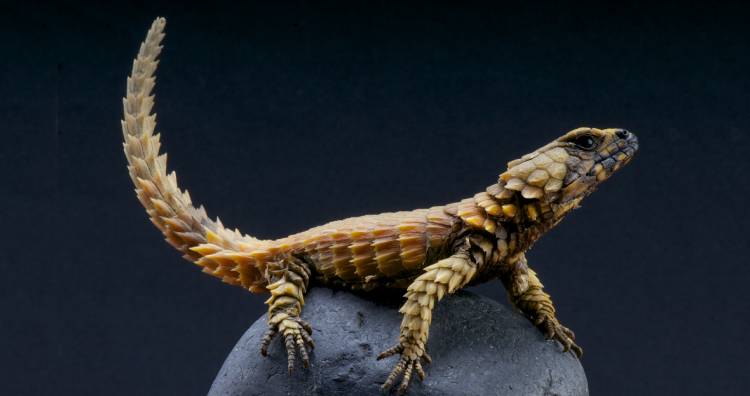Meet the Armadillo Lizard: The Closest Thing We Have to a Real-life Dragon
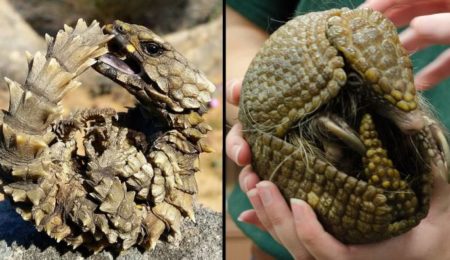
With its unique defense mechanism and thorny exterior, the armadillo lizard is perhaps the most fascinating reptile in the world. These lizards, therefore, are interesting in more ways than one and immensely popular among pet-keepers. Yet, there is much that we don’t know about this amazing creature. So, if you’re someone who wants to know more about this mini-dragon, here are some interesting facts about the armadillo lizard.
Table of Contents
Native to South Africa, this reptile is a real-life mini-dragon that curls up like an armadillo.
The armadillo lizard, scientifically named Ouroborus cataphractus, is the closest you’d ever come to meeting a mini-dragon. These wonderful creatures are found in the desert areas along South Africa’s western coast. There, you may spot them inhabiting rock outcrops and mountain slopes or sunbathing under the warm sun.
The impressively built armadillo lizards are easily recognized by their light- to dark-brown color and yellow underbellies that often carry a blackish pattern, especially under their chins. And as if this didn’t set them apart already, they also come equipped with an unusual defense mechanism.
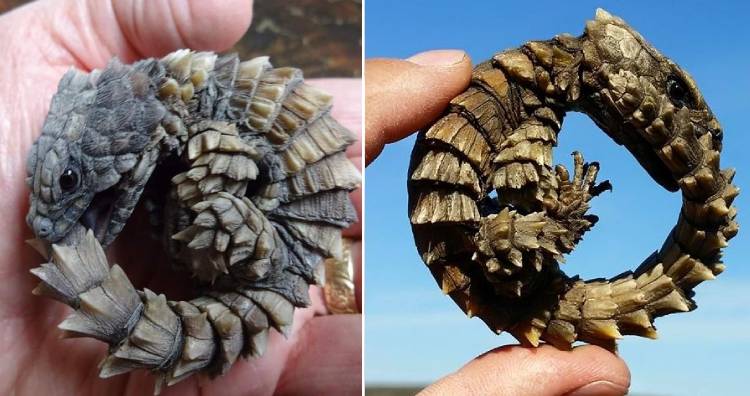
These lizards, much like their animal namesake, curl up into a ball when they perceive danger around them. They then bite onto the ends of their tails and form perfect little balls of tough scales and spikes. This way, they can ensure that their softer underbellies are kept safe from pesky predators like snakes, mongooses, and big birds.
Although generally a docile reptile, the males of this species exhibit territorial behavior
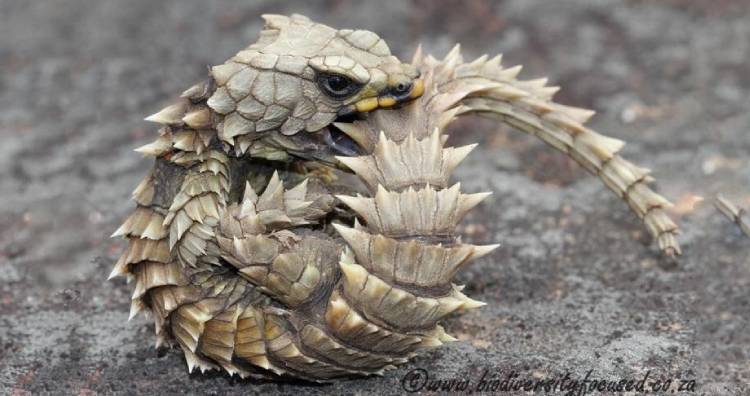
If you’re someone who prefers to stay at least a mile away from the various creepy-crawlies of the world, the armadillo lizard may appear dangerous to you. However, they’re generally known to have docile natures. In the wild, these lizards often try to scurry away when approached by other creatures. This nature, along with the fact they are easy to care for and are unique in appearance, has made them a popular choice among beginner pet-keepers.
Interestingly, despite their calm natures, the males of this species can be rather territorial. In fact, there can be some competition and aggression even among male members of the same group. But this aggression is typically lower than what is shown to outside males.
Despite this behavior, however, there is evidence that suggests a high level of movement between groups of males, juveniles, and females.
Unfortunately, their uniqueness has also made them vulnerable to illegal trafficking
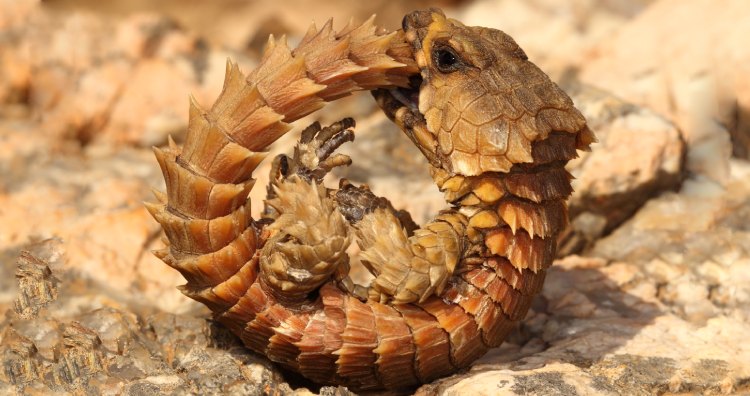
As a result of this, human beings have become one of the biggest threats to the armadillo lizard. Their slow-moving natures and propensity to stay in groups also often make them an easy target for illegal collectors. This is a huge reason why, up until the 1990s, the Ouroborus cataphractus was classified as a vulnerable species by the IUCN.
Thankfully, today, exporting wild-caught armadillo lizards is illegal. and the IUCN has downgraded them to “least concern.†But this does not mean that they are completely out of danger. In spite of the ban on their exportation, many traffickers still attempt to illegally capture them.
For instance, in 2017, a man who had traveled to South Africa from Japan was arrested after being found with 48 armadillo lizards. A month later, another Japanese man was caught for the same offense, demonstrating how traffickers can be a big menace to this species.
Here are some more facts about the armadillo lizard:
1 Despite their names and other similarities, the armadillo lizard is not related to the armadillo.
Sure, they share a name and certain features, but armadillo lizards and armadillos are not related to each other. The armadillo lizard is a reptile that belongs to the family Cordylidae. On the other hand, the armadillo is a New World, placental mammal.
2 The armadillo lizard is one of the few reptiles that does not lay eggs.
Typically, females of this species give birth to one rather large, live young one. They also tend to give birth just once a year, setting them apart from most lizard species.
3 They get their taxonomic name from the mythical ouroboros symbol.
The ouroboros symbol depicts a dragon or a serpent eating its own tail, forming a circle. When the armadillo lizard displays its defense mechanism, it resembles this symbol, thus earning it its taxonomic name.
4 These lizards also display sexual dimorphism where males and females have distinguishable features.
For instance, male armadillo lizards generally grow larger than their female counterparts, making it possible to tell them apart.
5 This reptile feeds on small invertebrates and insects such as termites.
In the wild, the armadillo lizard commonly feeds on termites, particularly  Microhodotermes viator and Hodotermes mossambicus. However, it is not completely out of the ordinary for it to eat plant material as well.
6 As a rather social reptile, this lizard tends to live in groups.
These groups have two to 60 individuals, with an average of six. Such groups also need not always be composed of family units. Interestingly, permanent group living of this sort is said to be uncommon among lizards.
7 Armadillo lizards use their tails, tongues, and heads to communicate with each other.
As a result, they can be seen wagging their tails, bobbing their heads, or flicking their tongues. Some of these actions may aid in reproduction while others, like tongue-flicking, may be used as warning signs.
8 During winters, armadillo lizards often reduce their termite consumption.
This behavior is thought to reduce food competition between members of a group. It has also been noted that lizards in larger social groups tend to eat more termites than those in smaller groups.
9 Like most lizards, the armadillo lizard, too, can drop its tail to escape from predators.
This phenomenon is called “autonomy.” However, unlike other lizards, the armadillo lizard’s tail is a crucial part of its defense mechanism. As a result, they generally drop their tails only as a last resort.
10 When in defensive mode, these lizards can stay curled up for up to an hour.
The armadillo lizard, as we’ve seen, tends to curl up into a ball and bite its own tail when threatened. This position then exposes its spiny exterior, making predators quickly lose interest in it. When it puts up its defenses this way, this lizard can stay balled up for as long as an hour.
 15 Unique Species You’ve Probably Never Seen Before














